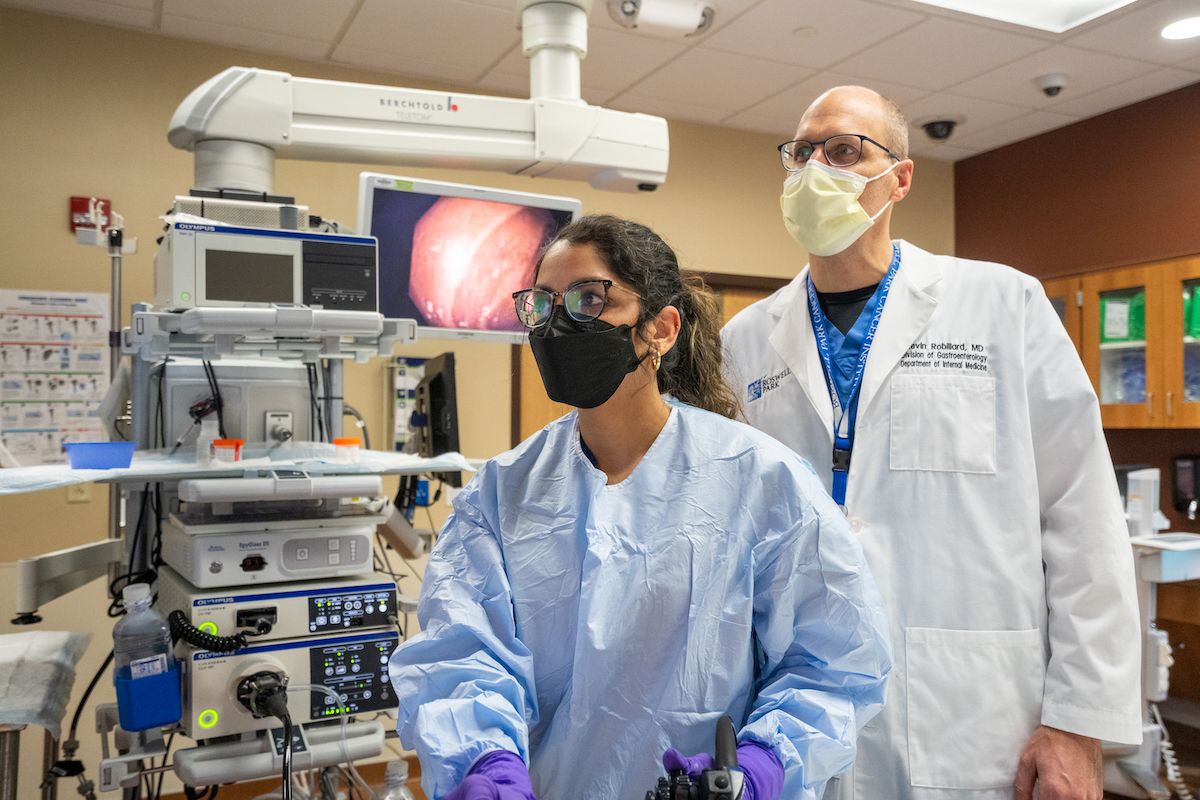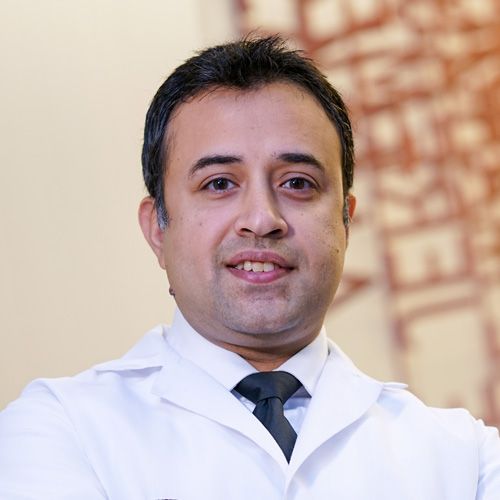The best treatment decisions for patients with stomach cancer rely on state-of-the-art imaging and diagnostics. We use the following procedures to evaluate, diagnose and stage gastric cancers:
- Endoscopy with biopsy: After numbing your throat with an anesthetic spray, a thin, lighted tube (endoscope) is passed through your mouth or nose into the esophagus. Tissue samples may be taken during the procedure.
- Endoscopic ultrasound (EUS): Performed only at specialized centers, this procedure uses a tool similar to the endoscope, but with a small ultrasound device at the tip. EUS provides high-quality and detailed images useful for diagnosing and staging upper GI cancers. A needle may be used to collect tissue samples of lymph nodes.
- Computed tomography (CT) scan: An x-ray machine linked to a computer takes a series of detailed pictures of your chest and abdomen to learn whether the cancer has spread to lymph nodes and other areas. You may receive contrast material by mouth or by injection into a blood vessel, to highlight any abnormal areas.
- Positron emission tomography (PET) scan: You receive an injection of a small amount of radioactive sugar. The sugar gives off signals that the PET scanner picks up. The PET scanner makes a picture of the places in your body where the sugar is being taken up. Cancer cells show up brighter in the picture because they use energy (sugar) faster than normal cells do. A PET scan shows whether stomach cancer may have spread.
- Biomarker tests. Several types of tests may be conducted on your tumor sample or biopsy to look for specific DNA mutations, proteins such as HER2, PD-L1, EVB and other features of your tumor. Certain proteins and mutations can indicate that your cancer is best treated with a targeted therapy.
Every patient’s case, imaging and pathology is reviewed by our surgery, medicine and radiation oncologists to develop a plan based on the patient’s tumor biomarker status and complete staging in order to maximize the benefit of aggressive surgical therapy, chemotherapy and immunotherapy and radiation with special attention to optimal sequencing of therapy.

